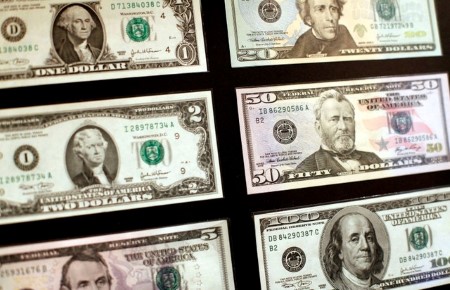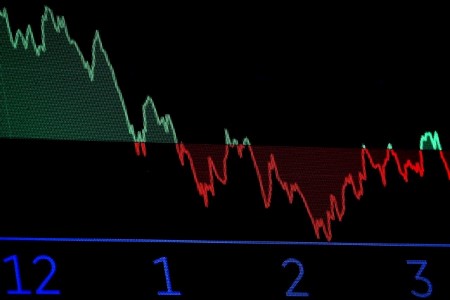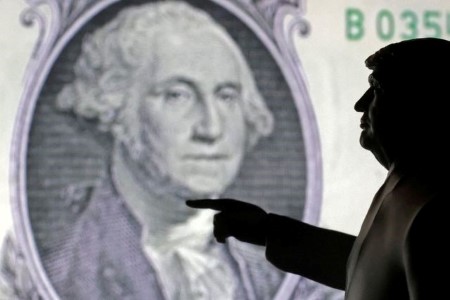SINGAPORE – Foreign investors could once barely imagine that China would invade neighboring Taiwan, but with Donald Trump as president of the United States, many view it as a tail-risk scenario they must prepare for, although they cannot find ways to do so.
The democratically-governed island has long been a point of contention in US-China relations, which have worsened since Trump entered the White House in January and launched trade tariffs that have rattled markets.
Investors fear that if China attempts to take over what it considers “sacred” territory, it risks a war that ushers in the end of Taiwan as a market with its own currency and identity, while the only other alternative is peace and the status quo.
For investors, the choice therefore is to stay out completely or stay invested and hope for the best.
The risk of any invasion is difficult to hedge, said Mukesh Dave, chief investment officer at Aravali Asset Management, a global arbitrage fund based in Singapore.
“You can’t settle any trades, the currency might disappear altogether,” he said. “You either carry on like it’s business as usual, or stay away.”
The odds of China invading Taiwan have risen to 12% on betting platform Polymarket from close to none earlier this year.
Skittish foreign investors have pulled nearly $11 billion out of Taiwan stocks this year, although much of that was fueled by concerns over tariffs and the economy and they made a tentative return in May.
The benchmark index is down 6% this year.
While the United States has long stuck to a policy of “strategic ambiguity,” on Taiwan, not making clear whether it would respond militarily to an attack, Trump’s predecessor, Joe Biden, said during his time in office that US forces would defend the island if China were to attack.
Rising geopolitical tensions from Trump’s talk of a new global order and his disregard for Russia’s takeover of swathes of Ukraine have raised doubts about such US protection for Taiwan.
While Taiwan has lived under the threat of Chinese invasion since 1949 when the defeated Republic of China government fled there after losing a civil war with Mao Zedong’s communists, the two sides have not exchanged shots in anger for decades.
Yet, tension has simmered across the Taiwan Strait that separates the island from China. China’s two-day war games around Taiwan in April further fueled investor worries.
The latest barbs came this week as Taiwan President Lai Ching-te used a news conference marking his first year in office to pledge peace with China, only to have China’s Taiwan Affairs Office say his remarks were a “two-faced tactic” and that Taiwan cannot “stop the inevitable trend of national reunification.”
Lai, whom China calls a “separatist,” rejects Beijing’s sovereignty claims, saying only the island’s people can decide their future.
Goldman Sachs’ Cross-Strait Risk Index, which gauges the intensity of geopolitical risk by counting the number of news articles mentioning tension, has been rising since Trump won the US election last year.
“If aggression toward Taiwan occurs, the investment decision becomes binary: stay exposed and absorb extreme volatility, or exit swiftly to preserve capital,” said Steve Lawrence, chief investment officer of Balfour Capital Group.
Crown jewel
The Taiwan investment rationale centers on Taiwan Semiconductor Manufacturing Co (TSMC), the world’s largest contract chipmaker and the semiconductor industry’s crown jewel.
TSMC, which counts Nvidia and Apple as major clients and whose stock is listed in Taipei and New York, powered the stock market to record highs earlier this year.
“TSMC is so big that the expectation among investors is the United States will defend Taiwan, and defend it strongly,” said Dave of Aravali. “That is the hope.”
Yet TSMC has been in Trump’s crosshairs as he unleashed tariffs in April and later delayed some duties to negotiate with foes and allies alike.
Local fund managers say while there may be no way for investors to hedge against an actual war, they do have options to hedge against possible market declines driven by fear of war.
However, Li Fang-kuo, chairman of Uni-President’s 1216.TW securities investment advisory unit in Taiwan, is skeptical of the need for such hedging, as he believes foreign investors are misreading the level of risk of a cross-strait war.
“We shouldn’t interpret it from a geopolitical risk perspective. The key issue is the tariffs.”
Rich Nuzum, global chief investment strategist at pension fund adviser Mercer, said his clients that have looked at the risk found the best option was to diversify.
“I think stress-testing for crisis is being done more and more.”
(Reporting by Ankur Banerjee, Rae Wee, Tom Westbrook and Vidya Ranganathan in Singapore, Faith Hung in Taipei; Editing by Vidya Ranganathan and Clarence Fernandez)







 DOWNLOAD
DOWNLOAD













